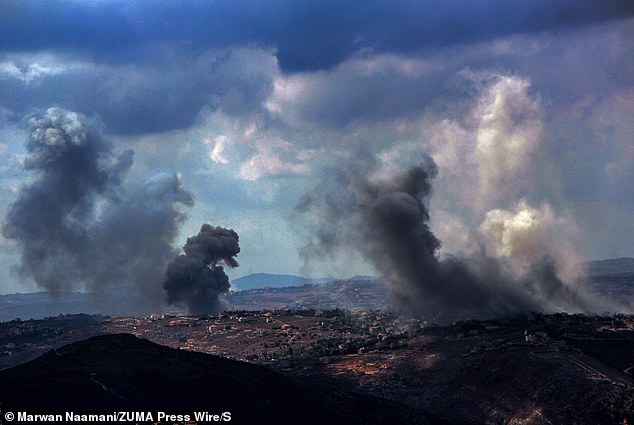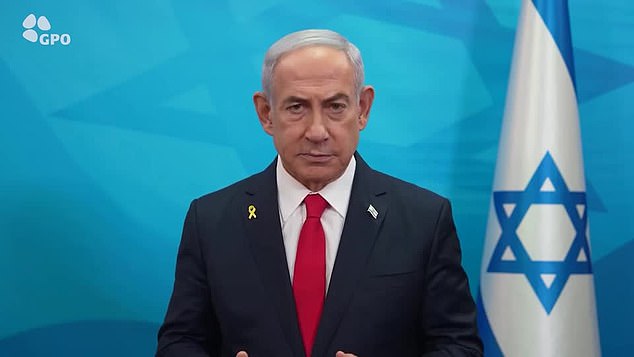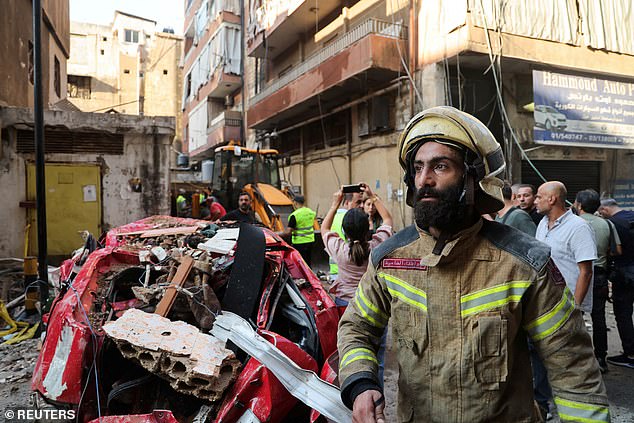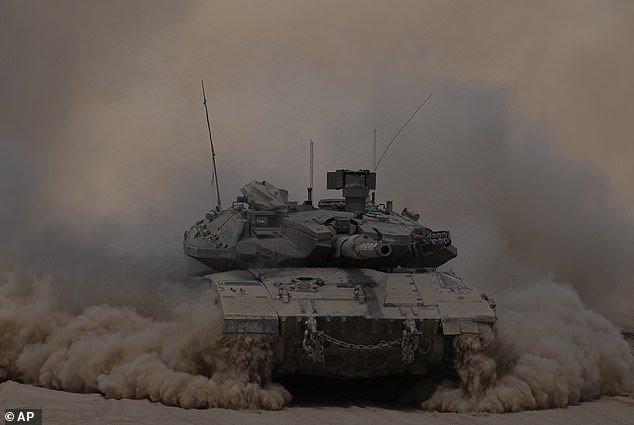Hezbollah has spent years turning southern Lebanon into a fortress packed with a formidable array of firepower.
The Shiite Muslim cities from which it draws its fighters and the Christian villages it uses as cover for its murderous campaigns are home to a vast arsenal of more than 150,000 rockets.
What’s more, it has had years to develop a sophisticated network of tunnels and observation posts in the mountainous terrain that runs along Israel’s northern border.
And in the 11 months since Hamas launched the raid from Gaza that killed 1,200 Israelis last October, Hezbollah has maintained a near-constant barrage of missile attacks – with no fewer than 8,000 rockets – and 60,000 Israelis have been evacuated from the area. last year.
Benjamin Netanyahu’s government has promised to return these people to their homes, but that can only be done once the threat of Hezbollah attacks has been neutralized.
An Israeli army tank, photographed in an area of Israel’s southern border with the Palestinian Gaza Strip in August.

Smoke rises over the site of an Israeli airstrike that targeted the southern Lebanon village of Taibeh this week.

Benjamin Netanyahu’s government has promised to return these people to their homes, but that can only be done once the threat of Hezbollah attacks has been neutralized.
And that can only be achieved through a ground operation involving Israeli tanks, infantry and special forces equipped with swarms of drones crossing the border into Lebanon.
Some of the more excitable commentators would like us to believe that this could trigger the start of World War III, but as someone who has covered the activities of Hezbollah and other Iranian proxies in the region for a decade, I can tell you that is nonsense. .
But, having made regular visits to northern Israel since the Hamas atrocity, one thing I know for sure is that no ceasefire agreement with Hezbollah is worth what is written on paper.
After the 2006 war between Israel and Hezbollah, for example, the terms of UN Resolution 1701 restricted Hezbollah to territory north of the Litani River, which runs 15 to 20 miles north of the border.
This meant that Israel would be out of range of its anti-tank guided missiles, the weaponry that Hezbollah has used to attack Israeli communities along the border. It would also prevent Hezbollah from carrying out an October 7th-style surprise attack. Has Hezbollah fulfilled this agreement? Of course not.
Before the Hamas incursion, Israel was preparing for the possibility that Hezbollah’s well-trained Radwan Force would launch attacks against Israel at points along the 50-mile northern border in an attempt to seize some of the small communities. Israelis dotting the ridges along the front line. In the end, Hezbollah has been content with its relentless missile bombardment and has vowed to continue these attacks as long as the Gaza war continues.
And it is just one element of Iran’s multi-front war against Israel, which includes militias in Iraq and the Houthis in Yemen. These groups not only attack Israel itself, but also attack commercial ships sailing through the region and US forces in Iraq and Syria.
Hezbollah is unwilling to resign without an order from Tehran and the virulently anti-Semitic mullahs who rule Iran are happy to continue sending Lebanese Shiites to their deaths.
In such a context, a land war seems increasingly likely. And Israel has spent years training its military for precisely that eventuality.
Just this week, the 7th Armored Brigade of the Israel Defense Forces (IDF) completed its preparations for an invasion of southern Lebanon. Just a few kilometers from the Lebanese border, troops were trained in “maneuver and combat in thick, mountainous terrain,” according to the IDF.
As Israel’s troops have endured heavy fighting in Gaza, they are probably better prepared than they have been in decades.
But serious challenges still lie ahead.

A firefighter at the scene of an Israeli attack, in the southern suburbs of Beirut,
Iran’s proxies have begun to intensify their attacks. Iraqi militias launched drones against the southern Israeli port city of Eilat on September 25. One reached its target while another was shot down.
However, drones and missiles do not win wars and Israel has very effective air defenses to combat precisely that threat. Nor is Iran likely to risk a major regional war by entering the fray itself.
Instead, Tehran will try to isolate Israel diplomatically, as its new president tried to do this week at the UN General Assembly.
If Israel wants Hezbollah to abandon the hills overlooking Israel south of the Litani, it seems increasingly likely that it will need to use tanks and infantry.
Seth J. Frantzman is an analyst for The Jerusalem Post, an adjunct fellow at the Foundation for Defense of Democracies, and author of The October 7 War: Israel’s Battle for Security in Gaza.


